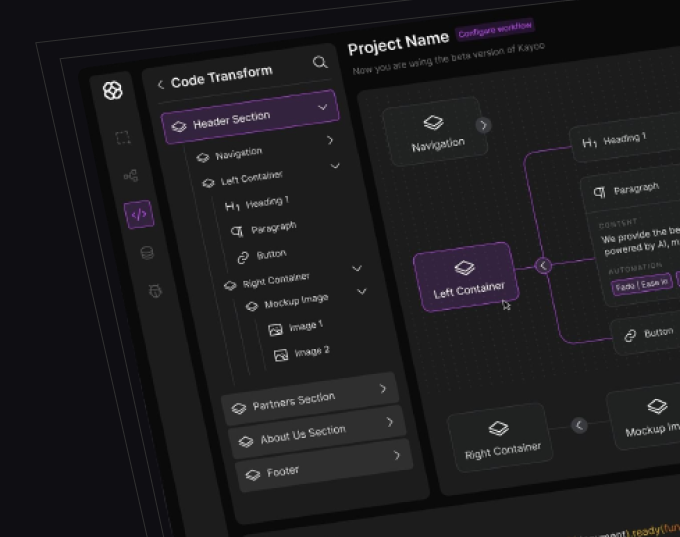Cloud Optimization
Services and Consultancy

Services and Consultancy
Heimler’s Journey From Blind Spots to Business Clarity – A3Logics Unleashes the Power of Live Intelligence
Discover More
Redefining the Future of Lending – Cred Fintech’s Monumental Transformation with A3Logics
Discover More
Revolutionizing Credit Risk – How A3Logics and Heimler Redefined Trust and Precision with Machine Learning
Discover More
Transforming Risk to Opportunity – A3Logics and Heimler Revolutionize Credit Risk Modelling
Discover More





















A3Logics provides cloud cost optimization services to help businesses maximize their online visibility within any budget. We deliver data-driven recommendations tailored to your specific goals and resources. We identify inefficiencies, wasted spending, and overlooked optimization opportunities by analyzing your cloud usage and costs. We then implement and continuously optimize strategies boosting key metrics while reducing costs and complexities.
We offer cutting-edge cloud cost optimization solutions that enable businesses to reduce their cloud costs while maximizing performance and scalability. Our team of experts works closely with clients to understand their unique cloud requirements and develop customized optimization strategies that meet their specific needs.
Maximize cloud efficiency with our optimization strategies, cutting excess capacity and costs. We analyze patterns to rightsize resources, employing auto-scaling and asset management for lean operations.
Streamline your financial oversight with our cloud cost center mapping. We provide insights into resource usage and cost accrual for targeted optimization and strategic fiscal management.
Assess your digital ecosystem’s readiness for cloud migration. Our comprehensive analysis evaluates infrastructure, applications, and business alignment, optimizing for cost-effective and strategic cloud adoption.
Ensure your cloud strategy adheres to stringent security and compliance standards. We delve into regulatory alignment, safeguarding your infrastructure through robust security and compliance evaluations.
Gain from our expertly architected cloud solutions and unwavering support. Continuous monitoring and strategic guidance keep your cloud services aligned with business needs, ensuring operational excellence.
Navigate the complexities of multi-cloud ecosystems with our governance and cost management solutions tailored for AWS, Azure, and Google Cloud, ensuring optimal performance and strategic resource utilization.

Stay ahead of the competition with our top-notch cloud optimization services

We help clients to select the right cloud infrastructure and services that align with their business goals and objectives.
Leverage our vast experience in delivering complex cloud projects across various industries. A3Logics optimizes your cloud requirements, priorities, and constraints, ensuring even the most intricate deployments are handled with finesse, from migration to custom application development.
With a team of certified experts in AWS, Azure, GCP, Docker, and Cloud Native, A3Logics brings decades of experience to design, develop, and optimize your cloud infrastructure. We’re committed to continuous learning and certification in cloud cost management.
A3Logics excels in providing top-tier cloud security services, focusing on proactive risk management and compliance governance. Our expertise in threat analysis and policy development ensures your cloud investments are protected with appropriate defenses.
Our cloud cost management architects are devoted to comprehending the nuances of technical, security, and business requirements, fostering innovation and strategic progress in cloud deployment. Their bespoke recommendations aim to maximize meaningful outcomes and efficient cloud spending.
A3Logics specializes in data-centric security solutions that protect sensitive information while remaining compliant and optimized for accessibility and cost. Our approach deeply analyzes data risks, ensuring controls and costs are balanced for the greatest business impact.
A3Logics is synonymous with flexibility, adapting to your business goals, technology stack, and resource needs. Our recommendations promise optimized responsiveness, ensuring a partnership that values long-term success over temporary solutions, simplifying complexity, and controlling costs.
A3logics redesigned the logistics software of a mobile app solutions company’s end customer. The project included creating a comprehensive solution with reporting features, order tracking, and system updating.

“Their distinct flexibility and their strong communication were the project’s main assets.”


A construction technology company hired A3logics for custom software development. They created a construction digital platform that allows users to see project areas, distribute resources, and share data.
“Their software has proven essential in the construction sector.”

A3logics created and implemented a custom logistics software solution for a wealth management platform. This included developing features and integrating real-time tracking and data analytics functionalities.

“They ensured our collaboration went well by providing timely items and responding quickly to our requests.”


A3logics created and executed a personalized Generative AI system that featured chatbots for customer service, prediction algorithms, and AI-powered data analysis tools.

“Their technical expertise and reactivity were excellent.”


A3logics has developed an administrative management system for a health testing company. The product is designed to handle operations such as consultant matching, time reporting, and compensation management.

“The collaborative team we’ve worked with has shown great flexibility and excellent project integration.”


A transportation company hired A3logics to create a custom software program for freight activity tracking. The team also created invoicing tools and a driver-tracking system connected to a dispatch system.

“Their thorough inquiry and engagement with our team reflect their commitment to understanding our requirements.”


Cloud spend management is the governance and control of costs associated with cloud services, infrastructure, and platforms. It encompasses budgeting, monitoring spending versus budgets, setting alerts, and gaining visibility into usage and fees. It also includes analyzing trends to identify optimization opportunities and reconfigure or terminate under utilized services and resources.
To manage cloud costs, you set budgets and alerts, analyze reports to find savings, use the right resources for the job, automate when possible, educate users, and get help from experts. You cap total spending and monitor costs vs caps. If costs rise too high, you get alerts. You review usage reports regularly to spot extra costs from wasted capacity or features you don’t need. You ensure each workload has optimal resources to run with ease without overpaying.
The keys to optimizing cloud costs are visibility, governance, right-sizing resources, controls, monitoring, automation, education, and consultation. You need visibility into costs, usage, and objectives to govern wisely. You keep costs aligned with key metrics and priorities. You ensure resources meet needs but don’t over- or under-provision. Controls include budgets, alerts, security, and multi-cloud management.


Marketing Head & Engagement Manager